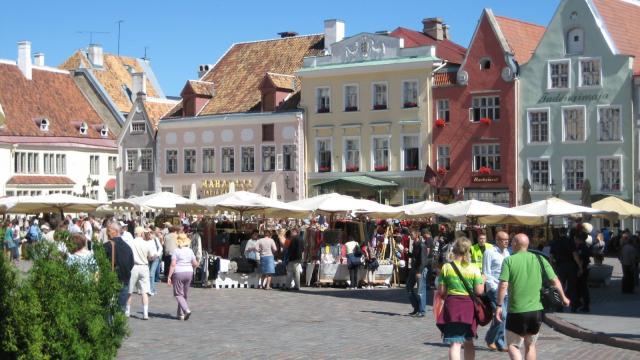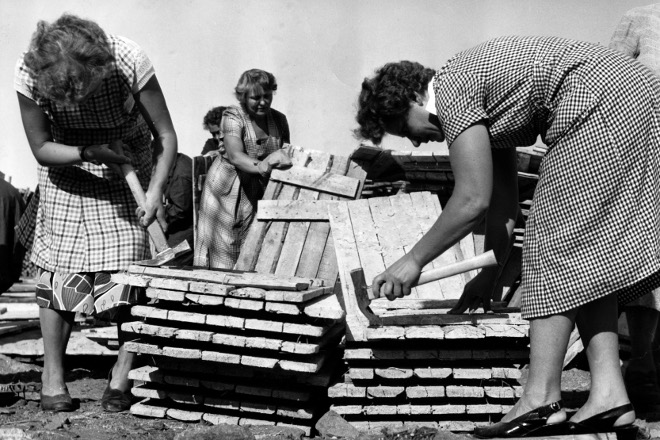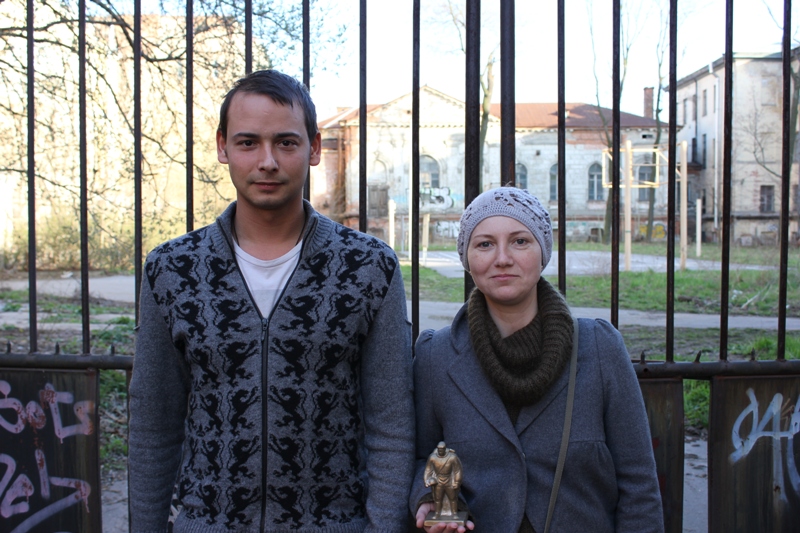
A little over a week ago, activists from a local neighborhood association had something unprecedented to celebrate in Estonia’s capital. Local residents, media and city officials were among the hundred or so who showed up to the event, which would have formerly belonged only to politicians, as members of Telliskivi Selts cut the ribbon and declared a new street open.
What was special about this street, located in one of the city’s central districts, is that pedestrians and cyclists have more space than cars.
The city of Tallinn would not have made the decision to create the street on its own. The project required not only lobbying but design input from the local activists who built it. An engineering student prepared the plan as part of a course project. After urban planning experts won over the city with a design that favored cyclists and pedestrians and curtailed the speed of cars, the construction was approved.
The opening of the street is the latest and perhaps most prominent sign of the local citizen activism that is increasingly helping remake Tallinn for the past seven years. The city has eight boroughs, which include 84 neighborhoods. Out of those, 20 neighborhood associations, Telliskivi Selts being one of them, have emerged.
The activism within the associations is varied, with different citizen initiative taking shape across the capital. They have successfully drawn together people from different political standpoints, education backgrounds, technical expertise and age.
And they have made those previously less interested in what went on beyond their house and courtyard think about—and start to change—the neighborhoods they live in.
The movement started seven years ago when a group of mainly young activists launched a neighborhood association called Uue Maailma Selts in the Tallinn neighborhood of Uus Maailm (“New World”), building on a previous generation of that activist work in the community.
Where the older groups viewed their neighborhood as cultural heritage and something best preserved, the young association wanted to strengthen social ties there, and to widen its politics toward sustainability. Uus Maailma Selts organized performance demonstrations in public space and introduced small-scale initiatives critical of the city’s car-centered street planning.
Telliskivi Selts started, like other associations, in a nearby neighborhood and adopted similar characteristics. Now, the associations are changing, branching off from one another and starting to deal in a more exclusionary form of politics, with some turning into hubs for nightlife and others becoming refuges for activists and many who are considered homeless.
There are reasons to be both optimistic and pessimistic about the current trends toward neighborhood activism. One reason for optimism is the new era of politics that Tallinn is supporting—a politics that is not stable in the traditional sense, but can shift between positions, depending on the issues emerging and the people assembling.
Telliskivi Selts, for instance, wasn’t always concerned explicitly with sustainable mobility and transit. Three years ago, the group fought against the city’s plan to expand priced parking into the neighborhood. As one activist explained to me, the event brought together diverse people: those who supported car-based travel in the city, those who strong disliked Tallinn’s leading political party, Keskerakond, and others—whether they were concerned with sustainability or not—who simply felt the city’s plan to be illogical.
The media finally grabbed hold of the story and the city was forced to withdraw its plan. As an observer of this newer kind of activism, I was skeptical at first. But I later realized its positive effects: the city’s aggressive action had spurred residents to think about alternative ways of transit and living in their neighborhood. The fight against priced parking brought locals together and taught them skills—in organizing, media communication and other realms—that prepared them to take the next step.
Today, it is the diversity in Kalamaja, the neighborhood where Telliskivi Selts is most active, that stands out. Here, a collaboration takes place between sociologists, who help in surveys and local research; architects and traffic engineers, who help with planning issues; and local politicians, who along with the media have also at times helped draw in experts to get involved.
Questions that people did not ask before about how they wanted to live in their neighborhoods are finally coming to the surface, and are being acted on. What is a safe street, and what should a street for cyclists feel and be like? Must the demarcation lines in a street exclude the walkers from bikers, or can there be looser contours that in fact strengthen one’s focus?
On the downside, this strong local level of activism is not only limited by its locality, but has also created an environment where neighborhoods can become competitive with each other for the city’s attention and resources. While people may grow closer together within their own particular community, subtle but growing antagonisms between neighborhoods are at risk of developing.
There are other serious divisions, both linguistic and cultural. Most of Tallinn’s neighborhood associations are located in what are called “milieu protection areas,” which are populated mainly by Estonian speakers. At the same time, half of the city speaks Russian as a first language, and most of them live in Soviet-era housing estates that reflect a very different sense of neighborhood structure, its purpose and its possibility.
To get beyond these and other barriers, activists started Linnaidee, or the “Urban Idea” project, which brings Tallinn neighborhood associations together in conversation with one another, often bilingually, to help move people away from speaking the language of otherness, toward more inclusive dialogue that addresses the city as a whole, including its disadvantaged.
Much has yet to be seen about what will come from this local level organizing. It is too simple to call this middle-class conservative activism, but it is also too early to hail such developments as a new form of progressive activism. Politics can shift, and what is conservative at one point can become progressive at another with a combination of new thinking and new people.
The young “left,” such as it is, may finally be getting involved with what goes on at the local level. And this involvement does not have to be merely an acceptance. Neighborhood associations in Tallinn can become more socially conscious as they incorporate issues of social justice into their agenda. The neighborhoods known as “milieu protection areas” are also sites with remarkable levels of poverty and deprivation, in need of improvement.
The process and achievements now underway show it’s time to take the initiative even further.
Tauri Tuvikene is a doctoral student at University College London. This article was published in collaboration with Res Publica and LeftEast.
3 WAYS TO SHOW YOUR SUPPORT
- Log in to post comments

















